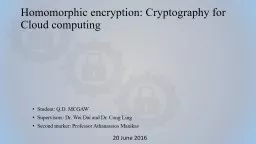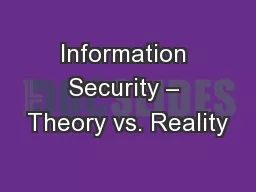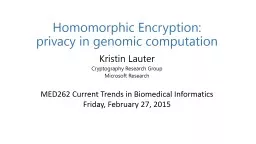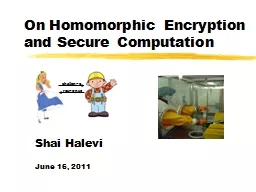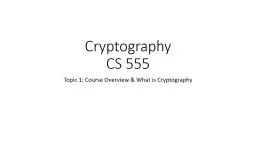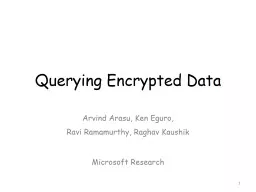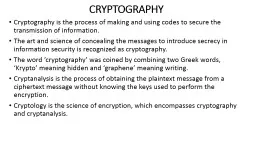PPT-Homomorphic encryption: Cryptography for Cloud computing
Author : blastoracle | Published Date : 2020-08-03
Student QD MCGAW Supervisors Dr Wei Dai and Dr Cong Ling Second marker Professor Athanassios Manikas 20 June 2016 Provide a general purpose C API for homomorphic
Presentation Embed Code
Download Presentation
Download Presentation The PPT/PDF document "Homomorphic encryption: Cryptography for..." is the property of its rightful owner. Permission is granted to download and print the materials on this website for personal, non-commercial use only, and to display it on your personal computer provided you do not modify the materials and that you retain all copyright notices contained in the materials. By downloading content from our website, you accept the terms of this agreement.
Homomorphic encryption: Cryptography for Cloud computing: Transcript
Download Rules Of Document
"Homomorphic encryption: Cryptography for Cloud computing"The content belongs to its owner. You may download and print it for personal use, without modification, and keep all copyright notices. By downloading, you agree to these terms.
Related Documents

